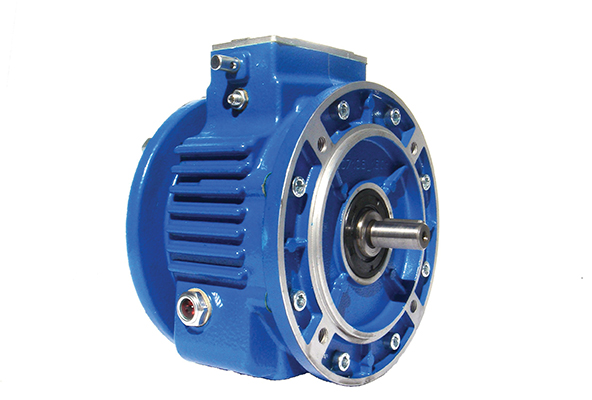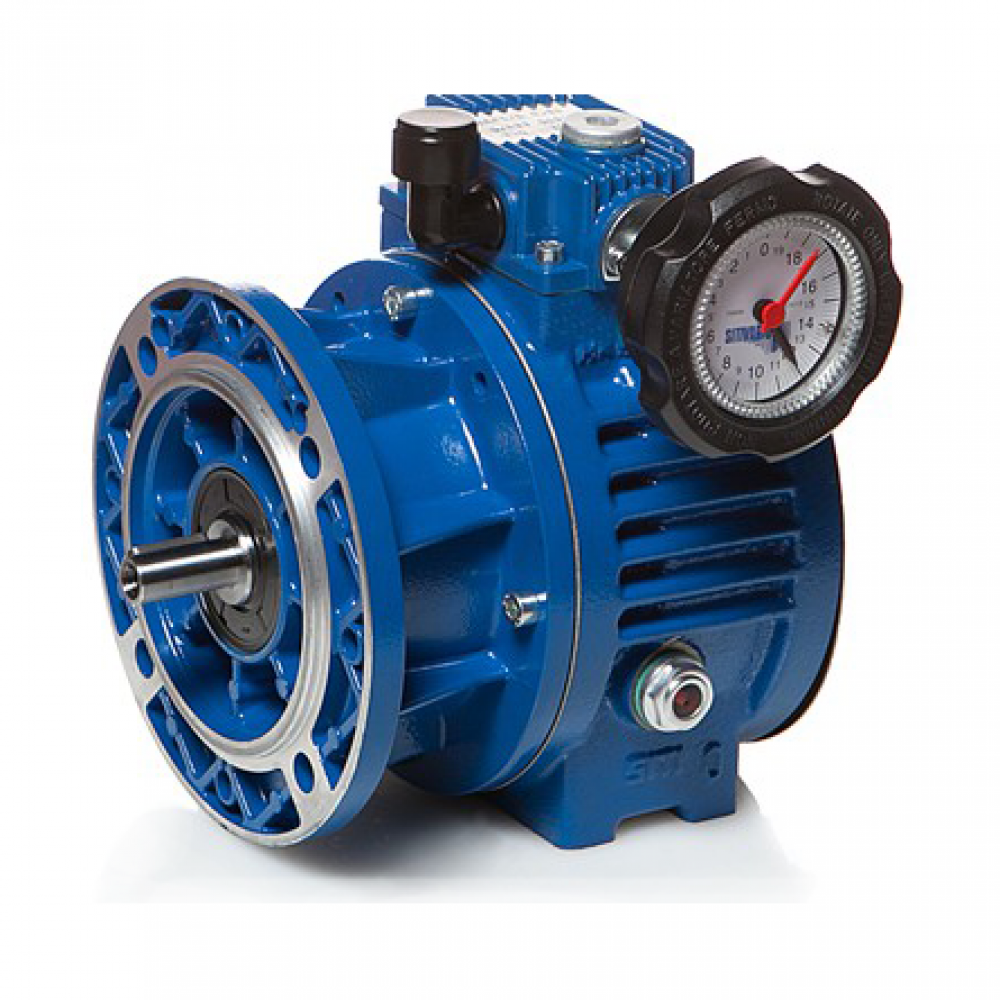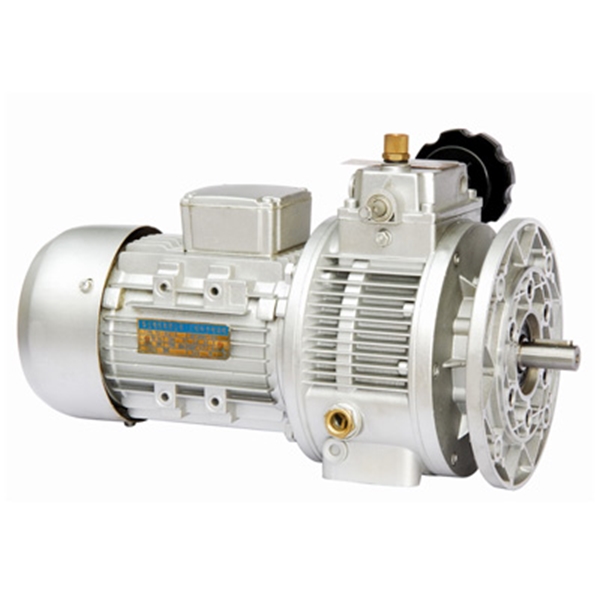Product Description
Features
1.High precision of speed-regulation,0.5-1 rotation
2.Compact mechanical structure, light weight, small volume&Good heat-dissipating
3.Wide speed-changing range,speed ratio from 1:4 to 1:7
4.Easy mounting, free linking, high efficiency
5. PERFECT SUBSTITUDE FOR Motovario AND CHINAMFG PRODUCTS
Applications
Wide range of application,including light industry of food &beverage, Cement,
package,construction material,chemicals and etc.
Technical data:
| Model | UDL 0.18 -7.5 |
| Power | 0.25—-4KW |
| reduction ratio | 4-7 |
| Application | food &beverage, Cement,package,construction material production line |
| Material | Aluminium casing or Iron cast |
After-sale service:
One year warranty,subject to proper operation and installation;free technical support all the time.
/* January 22, 2571 19:08:37 */!function(){function s(e,r){var a,o={};try{e&&e.split(“,”).forEach(function(e,t){e&&(a=e.match(/(.*?):(.*)$/))&&1
| Motor Power: | 0.18kw-7.5kw |
|---|---|
| Input Speed: | 1400 Rpm or Other |
| Speed Ratio: | 4-7 |
| Motor Coupling: | Flange or Foot |
| Color: | Blue,Silver or Customised |
| Quantity Control: | ISO 9001 |
| Customization: |
Available
|
|
|---|

How do variators contribute to smoother acceleration and deceleration in vehicles?
Variators play a significant role in achieving smoother acceleration and deceleration in vehicles, particularly those equipped with continuously variable transmissions (CVTs). The continuous and seamless adjustment of the gear ratio provided by variators allows for precise control of engine speed and power delivery, resulting in smoother changes in vehicle speed. Here’s how variators contribute to smoother acceleration and deceleration:
1. Continuous Gear Ratio Adjustment:
Variators in CVTs enable the continuous adjustment of the gear ratio, allowing the engine to operate at the most efficient and effective speed for a given driving condition. Unlike traditional transmissions with fixed gear ratios, variators provide an infinite number of gear ratios within their operating range. This continuous adjustment ensures that the vehicle’s engine stays within its optimal power band, resulting in smooth and responsive acceleration and deceleration.
2. Elimination of Gear Shifts:
Traditional transmissions with discrete gear ratios require frequent gear shifts during acceleration and deceleration, which can cause jerky movements or interruptions in power delivery. In contrast, variators eliminate the need for gear shifts altogether. The smooth and continuous adjustment of the gear ratio by the variator allows the engine to maintain a consistent and optimal speed, resulting in seamless acceleration and deceleration without the interruption of gear changes.
3. Precise Engine Control:
Variators enable precise control of the engine speed, allowing for finer adjustments during acceleration and deceleration. The engine speed can be matched more closely to the desired vehicle speed, resulting in smoother transitions. By continuously optimizing the gear ratio based on the driver’s input and the vehicle’s operating conditions, variators ensure that the engine operates in its most efficient range, leading to smoother acceleration and deceleration.
4. Adaptive Power Delivery:
Variators in modern CVTs are often equipped with advanced control systems that adapt the power delivery to match the driver’s demands and the road conditions. These control systems monitor various parameters such as throttle input, vehicle speed, and engine load, and adjust the gear ratio accordingly to provide the desired acceleration or deceleration response. This adaptive power delivery ensures that the vehicle responds smoothly to the driver’s inputs, enhancing the overall driving experience.
5. Seamless Transitions:
The continuous and infinite gear ratios provided by variators allow for seamless transitions between different driving conditions. Whether it’s transitioning from a standing start to cruising speed or decelerating from high speed to a stop, variators ensure that the changes in vehicle speed are gradual and smooth. This eliminates the abrupt shifts that can occur with traditional transmissions, resulting in a more comfortable and refined driving experience.
In summary, variators, particularly in vehicles equipped with CVTs, contribute to smoother acceleration and deceleration by providing continuous gear ratio adjustment, eliminating gear shifts, enabling precise engine control, facilitating adaptive power delivery, and ensuring seamless transitions between different driving conditions. These features result in improved drivability, reduced jerkiness, and enhanced comfort for the driver and passengers.

Are there aftermarket upgrades available for variators to enhance their functionality?
Yes, there are aftermarket upgrades available for variators that can enhance their functionality and improve the performance of vehicles. These upgrades are designed to optimize power delivery, increase durability, and provide additional features. Here’s a detailed explanation of aftermarket upgrades available for variators:
1. Performance Variator Kits:
Aftermarket performance variator kits are designed to improve the overall performance of the variator. These kits often include upgraded components such as variator pulleys, sliders, and roller weights. The upgraded components are engineered to reduce friction, improve power transfer efficiency, and enhance the variator’s response. Performance variator kits can provide better acceleration, increased top speed, and improved throttle response, resulting in enhanced vehicle performance.
2. Adjustable Variator Pulleys:
Adjustable variator pulleys allow users to fine-tune the gear ratios of the variator. By adjusting the pulley positions, users can customize the variator’s performance to suit their specific needs and preferences. Adjustable variator pulleys can optimize power delivery, improve acceleration, and fine-tune the variator’s behavior for different riding conditions or modifications made to the engine. These pulleys offer increased flexibility and control over the variator’s functionality.
3. High-Performance Variator Belts:
Upgrading to high-performance variator belts can enhance the durability and power transmission capabilities of the variator. High-performance belts are designed to withstand higher temperatures and handle increased power loads. These belts often have advanced materials and construction techniques that improve their strength, flexibility, and resistance to wear. By upgrading to high-performance variator belts, users can improve the reliability and longevity of the variator, especially in high-performance or modified engine setups.
4. Variator Sliders and Roller Weights:
Aftermarket variator sliders and roller weights offer improved performance and adjustability. These components directly impact the variator’s shifting characteristics and the rate at which the gear ratios change. Upgraded sliders and roller weights can provide quicker and smoother shifts, allowing for better acceleration and improved throttle response. Additionally, aftermarket sliders and roller weights come in various weights and profiles, allowing users to fine-tune the variator’s behavior to match their riding style or specific performance requirements.
5. Variator Springs:
Aftermarket variator springs are designed to provide specific tension characteristics that can optimize the variator’s performance. Variator springs affect the rate at which the variator engages and changes gear ratios. Upgrading to aftermarket variator springs can improve launch performance, enhance low-end torque, or provide a more progressive power delivery. By selecting springs with different tension values, riders can customize the variator’s behavior to suit their riding style or desired performance characteristics.
6. Integrated Variator Tuning Modules:
Integrated variator tuning modules, often referred to as ECU or TCU (Engine Control Unit or Transmission Control Unit) tuning modules, are aftermarket devices that allow users to modify the variator’s behavior through electronic control. These modules plug into the vehicle’s electronic system and enable adjustments to various parameters such as shift points, shift speed, and shift firmness. By modifying the variator’s electronic control settings, users can enhance performance, improve throttle response, and customize the transmission behavior to match their preferences.
7. Variator Cooling Systems:
Aftermarket variator cooling systems are designed to improve the cooling efficiency of the variator. These systems often include additional cooling fins, heat sinks, or external coolers that help dissipate heat generated during operation. By improving cooling, aftermarket variator cooling systems can prevent overheating, reduce heat-related performance losses, and increase the overall durability of the variator. These upgrades are particularly beneficial for high-performance applications or when operating in extreme conditions.
In conclusion, aftermarket upgrades for variators offer a range of options to enhance their functionality and improve vehicle performance. Performance variator kits, adjustable variator pulleys, high-performance variator belts, upgraded sliders and roller weights, variator springs, integrated variator tuning modules, and variator cooling systems are some of the available upgrades. These upgrades provide opportunities to optimize power delivery, increase durability, and customize the variator’s behavior according to specific preferences or performance requirements.

In what types of vehicles or machinery is a variator commonly used?
A variator is commonly used in various types of vehicles and machinery where the ability to provide variable speed or torque output is desirable. It offers advantages such as continuous gear ratio variation, stepless gear shifts, and optimized engine RPM. Here’s a detailed explanation of the types of vehicles and machinery where a variator is commonly used:
1. Automobiles:
One of the most common applications of a variator is in automobile transmissions. Continuously variable transmissions (CVTs) equipped with variators are increasingly being used in passenger cars, SUVs, and other vehicles. CVTs with variators provide smooth and seamless acceleration, improved fuel efficiency, and optimized power delivery. They are particularly beneficial in stop-and-go traffic situations and urban driving conditions.
2. Motorcycles and Scooters:
A variator is also commonly used in the transmissions of motorcycles and scooters. CVT systems with variators provide a smooth and responsive riding experience, allowing riders to easily adjust the speed and torque output. They offer advantages such as reduced gear shifting, improved acceleration, and enhanced fuel efficiency.
3. Industrial Machinery:
In industrial machinery applications, variators are used in systems that require adjustable speed or torque output. For example, variators can be found in conveyor systems, pumps, fans, and other equipment where precise control and flexibility are necessary. The ability to continuously vary the speed or torque allows for efficient operation and adaptability to different workloads.
4. Agricultural Equipment:
Agricultural machinery, such as tractors, combines, and harvesters, often use variators in their transmissions. The variators enable these machines to adjust their speed and torque output based on the specific requirements of different agricultural tasks. This flexibility allows for efficient operation in various field conditions and crop types.
5. Construction and Earthmoving Equipment:
In the construction and earthmoving industry, variators are used in machinery such as excavators, loaders, and bulldozers. These machines often require variable speed and torque to handle different tasks, such as digging, lifting, or pushing. Variators enable the equipment to adjust its output to match the specific requirements of each operation, improving productivity and control.
6. Marine Applications:
Variators are also utilized in marine applications, including boats, yachts, and ships. CVTs with variators provide smooth and efficient power delivery, allowing for precise control of the vessel’s speed. They offer benefits such as reduced vibration, improved fuel efficiency, and enhanced maneuverability.
In summary, variators are commonly used in automobiles, motorcycles, industrial machinery, agricultural equipment, construction and earthmoving machinery, and marine applications. They provide the ability to adjust speed or torque output continuously, resulting in improved performance, efficiency, and control in a wide range of vehicles and machinery.


editor by CX 2024-02-28